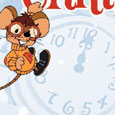Fleischer Studios/Paramount Pictures (December 18 1939), E1 Entertainment (March 10 2009), single disc, 76 mins plus supplements, 1.78:1 cropped widescreen (non-original ratio), Dolby Digital Mono and Surround, Not Rated (nothing offensive), Retail: $19.98
NOTE: After much debate online about its validity, and having now reviewed the final product for ourselves, Animated News & Views must uphold its previous recommendation not to purchase this edition of Gulliver’s Travels on Blu-ray Disc due to poor quality and questionable nature of the transfer.
Furthermore…all attempts to post this review with the words “gulliver” and “blu-ray” in the URL led to a suspicious bandwidth error from a site called “spiz.biz”, which seemed to block our images from appearing within this review. In all preview modes these images appeared correctly, but when published – and several separate attempts were made – the images vanished. It was only in testing that we found whenever the title character’s name and disc format featured in the URL, the page would be led to the “spiz.biz” domain.
We would be aghast if this was a specific attempt by a third party trying to block our honest review from appearing, and may never know if this was intentional or not, but as you’ll see from the images below, they don’t put the title in the best light. Hence our review now appears without the name “gulliver” in the link and, now for several more reasons than we even already had originally, we certainly recommend that you stay away from this disc. Avoid at all costs!
Storyboard:
Jonathan Swift’s satire loses much of its original punch, and its second half, in this otherwise very well crafted feature animated adventure from Max and Dave Fleischer.

Below: 2009 “widescreen” Blu-ray Disc.
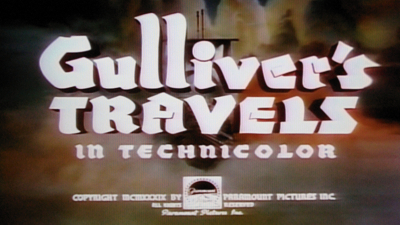
The Sweatbox Review:
There’s only one reason this review has been published and it’s because we wanted to see for ourselves if the horror stories surrounding this release were true. In short, they are, and from the outset we must back up claims made earlier on this site to stay away from this edition, even if you’re a Fleischer Studios fan.

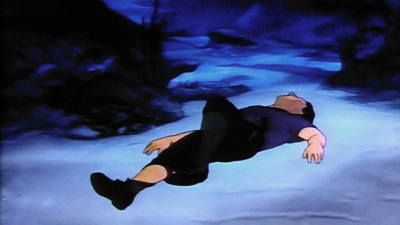
If you are, then you’ll know how, shocked at Walt Disney’s success with his first animated feature Snow White And The Seven Dwarfs, Paramount realised they were in business with the cartoon studio whose leading star – Popeye The Sailor – was just as popular as Disney’s Mickey Mouse in his heyday, and ordered the Fleischers to enter the feature film market. Paramount had been sitting on the Gulliver’s Travels property for a while – their version of Alice’s Adventures In Wonderland had proved to be a big hit for them and Swift’s story offered the same kinds of ingredients.
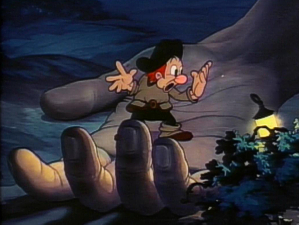

Under producer Max and director Dave, the eventual film would take on more of the Disney approach – indeed the generally decent notices the film received all included, as a caveat, talk about the “borrowed elements” from Snow White, and the “wholesale” Disney feel. There’s much to these points: although Gulliver’s Travels is no less guilty for jumping on the emerging animated feature wagon and beating Disney’s Pinocchio to the screen to take the honor of being the second such film released, and while the film does sparkle with some witty new personalities of its own, a fairly dull retreading of the romantic aspects don’t do anyone any favors.
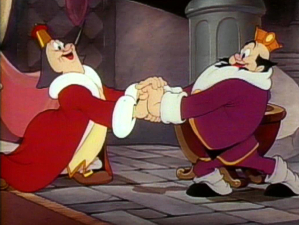
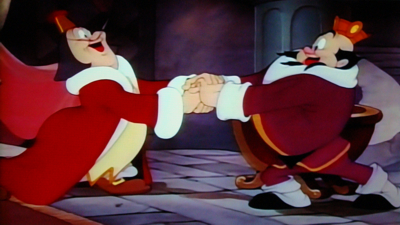
These observations emanate from the Prince and Princess sub-plot in the movie, where the children of two Kings, whose lands happen to be opposing factions, wish to marry and have to meet clandestinely, singing their sloppy ballads, Faithful and Forever, to each other at any opportunity. When a giant on the beach turns up in the shape of shipwrecked explorer Gulliver, he eventually proves the catalyst to drawing the two nations together, the Prince and Princess allowed to reunite and their song become one: actually one of the film’s very clever touches has both melodies harmonising together to create the Oscar-nominated song Faithful Forever. Assisting Gulliver through his adventures in Lilliput is Gabby, the town crier and token animated sidekick, while three comedy villains, Sneak, Snoop and Snitch, all provide some Dwarf-like shenanigans when they should be trying to outwit our heroes.

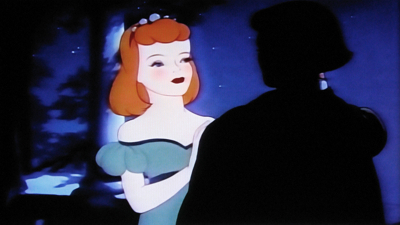
In all, Gulliver’s Travels is a fair enough entry in the pantheon of animated films, and a very important one that proved Disney wasn’t the only major artist on the block. The Fleischers would bounce back again with an even better film, Mr Bug Goes To Town, a contemporary tale that actually beats a certain amount of the Disney output of the 1940s, but bad timing on its release meant it clashed with the public’s fears over Pearl Harbor and flopped, Paramount choosing to oust the brothers from their Studio and dedicate it to producing cheaper looking shorts under the Famous Studios banner, before selling them off to television. Such was the fate of Gulliver’s Travels, too, resulting in a film that Paramount should have retained but that nowadays turns up all too regularly as cheapskate public domain releases in the bargain bins.
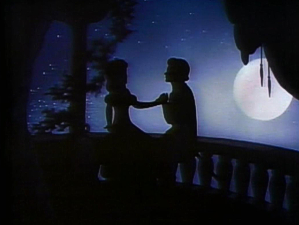

For the film’s 60th Anniversary, the Fox/Lorber company attempted to come to the film’s rescue, taking an average print and carrying out video paintbox remastering to the image, along the same lines as Disney’s own 1990s video restorations for LaserDisc. The result, on standard definition DVD, was rather pleasing: certainly not as sharp as one would have liked, but brighter and cleaner than most and even restoring the original Paramount title cards, which had been thought lost. With the advent of high-definition Blu-ray, the same team has apparently revisited the project, though it won’t take anyone more than five seconds to see through the sales talk and realise that this is the exact same edition.
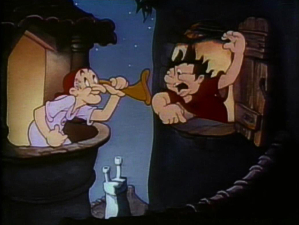
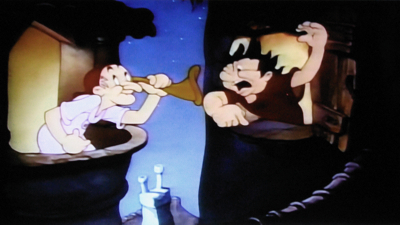
Only, it’s not quite: in a terrifying shadow of the future I hope we never have to witness, the film has been “enhanced” for anamorphic presentation, taking the naturally square Academy-produced (or “full-frame”) image and filling the 16:9 dimensions by way of squeezing, stretching, pulling, pushing and – most detrimentally of all – basically cropping out the top and bottom of the image to reframe it for today’s screens. Whereas all of the major studios simply present their Academy ratio films either with black strips along the sides or, in Disney’s case recently, with newly commissioned side-panel art, here the film has been totally screwed around with.
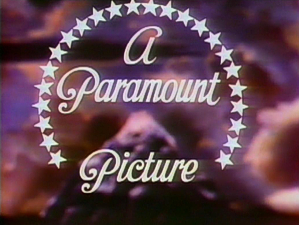
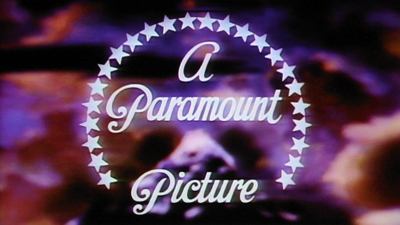
I have no idea who Dr Thomas R Reich is, but he seems to the fellow responsible, listed as the Restoration Producer and Director on this edition, which is frighteningly dedicated to “our dear friend Richard Fleischer”, son of Max and someone who has previously rigorously defended damaging his father and uncle’s animation legacy. Having passed on during the restoration process, I wonder if he really ever had a chance to see how that legacy was being mistreated here. As if he already knew the decision to reframe the film would meet with resistance, Dr Reich attempts to put some placation measures in place and professes to tell us in some liner notes, printed on the back of the sleeve, that “this entire process was done without stretching characters or losing any image beyond standard vertical safe areas. In fact, more picture is visible on the left and right sides than ever before”.

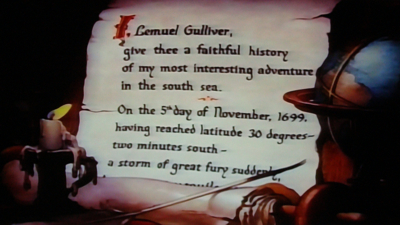
Right, so basically lop off the safe areas (compromised already by years of print duping) and make those areas dangerously close to the edge of frame, while the “more” image is basically a result of seeing a sliver on the width of the 1.37:1 negative frame as opposed to DVD’s 1.33:1, but this translates as a further loss due to the way displays overscan their images anyway. A loss of image is a loss of image, however Dr Reich wants to dress it up, and here tops of heads are routinely chopped off – a sure sign, if ever there was one, that image has not been added to but taken away. What’s that rhyme that ends “pants on fire”?
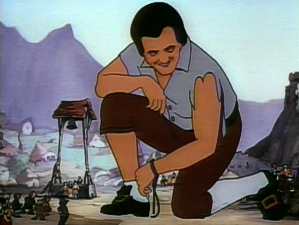
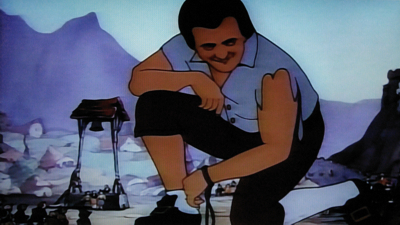
Anyone who knows even the tiniest bit about aspect ratios will tell you that there’s no way to turn a square image into a rectangular one without either stretching or cropping, and comparing images from the earlier, correctly framed 60th Anniversary edition, it’s clear that a multitude of approaches has been used. Mostly, the frames have been stretched out, largely clear in the fact that the tall and handsome Gulliver often looks shorter and dumpier than he should, while some important or problematic shots have been cropped or, what’s this!?, “expanded” to create some new edging from the existing elements, mostly evident in the opening titles where a soft focus, smudged “halo” is visible around the Paramount logo. As for the rest of the images, they take on a similar look to the standard definition released for the 60th Anniversary, but they’re strangely worse, having the effect of multi-generational videotape, where all the color has slowly washed away from its intended confines and starts to spill across the image.
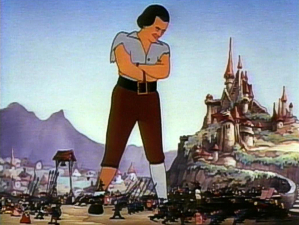
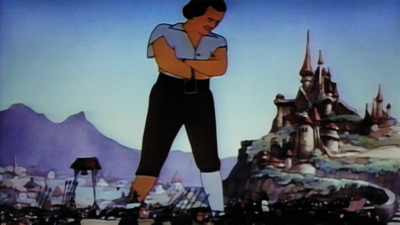
Imagine watching an edge-enhanced version of a very blurred picture, and you’re probably half-way there to witnessing Gulliver’s Travels in this edition. The main problem wouldn’t even be the softness, if it came to it, but rather the loss of detail, the disappearance of definition on the faces and backgrounds that are far from the Fleischer Studio’s usually sharp looking intentions, not exactly washed out, but just “smudged”. Whatever else may be levelled at the image quality, the fact that the actual framing has been tinkered so amateurishly with is good reason alone not to touch this edition with a long pole. I’d be surprised if this was really from an original print (to my video editor’s eyes it surely looks like some kind of video source), and it’s certainly not the way to see one Max and Dave Fleischer’s major works. Simply inexcusable and atrocious.
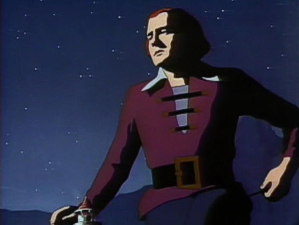
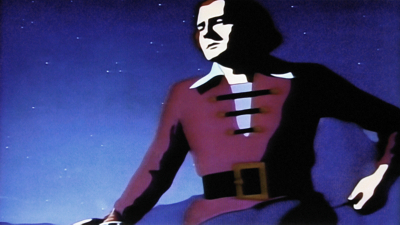
Is This Thing Loaded?
Such was the success of Gulliver’s Travels in theaters that Paramount insisted the film’s breakout character, the “hap-hap-happy” town crier Gabby, star in his own series of short films. Previously released on LaserDisc during Republic Home Video’s excellent wave of Fleischer mania, which also saw releases for the Betty Boop cartoons and the Hoppity Goes To Town feature, only two of the six/eight shorts have been brought to this disc, again as per the 60th Anniversary DVD edition.

Below: 2009 Blu-ray Disc.
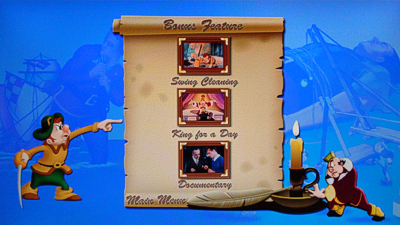
Now this is more like it: both cartoons appear, if in just as muddy quality as the feature, at least in their correct 1.33:1 aspect ratio. But that’s the only good news: despite the main titles being present on other releases, both these cartoons, Swing Cleaning and King For A Day, are presented without any main title or end cards, so what’s the point? Title cards – albeit TV replacements – were present on the 60th Anniversary disc, so what gives? There was also a generally decent five-minute gallery of stills and articles from the film’s release on the 60th Anniversary disc, which has been dropped here, and the menus, which were again pretty neat on that disc, have been replaced with very basic text screens here…not the best way to show off an “upgrade” to BD.
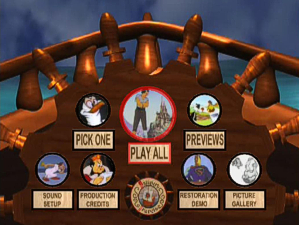
Below: 2009 Blu-ray Disc.

The only bright spot is a pretty decent rendering of How A Fleischer Cartoon Is Made, a promo film made shortly after the Brothers moved from New York and set up shop in Miami. Following the progress of the Popeye two-reeler in which he plays Aladdin, the short has been seen in many other compilations and so as such isn’t the rarity it once was. To be fair, it looks pretty decent here, even if detectable shimmering in the image suggests again this comes from a video source that has been seriously filtered. It is HD, but not as we know it.
Case Study:
Now this is where this edition of Gulliver’s Travels beats out the 60th Anniversary disc and may entice weak-willed collectors. Be strong and stay away…whatever the case looks like, and it looks very inviting, a closer look will alert you to the dangers within. On the front, the “digitally restored and re-mastered” banner may have you excited, but check out those characters: Gulliver displays the smudgy look that the entire film sports, while Gabby is amateurishly off-model, and what’s with the half sea-half brick background? On the back, we’re promised that “an animated classic is reborn on Blu-ray”, but they’re obviously talking about the concurrently released Pinocchio because this one is close to looking like the living dead.

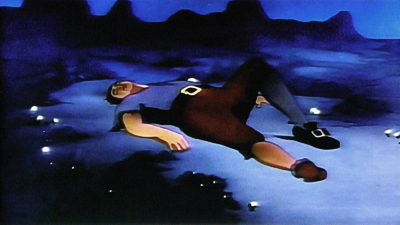
Despite the much touted 1939 date, no-one on the design team thought to mention the 70th Anniversary of the film and try and make that a selling point, though the “breathtaking newly-enhanced picture and sound” is mentioned. Yep, it’s breathtaking alright, and I should be okay again in the morning! Far from the “definitive edition” it suggests it is – which, of course would reinstate the missing areas of the frames and present the film as intended – it claims a restoration from “original source 35mm film” and that the two included Gabby cartoons were “made from the original feature outtakes”. What!? This is total fabrication: while some footage of Gabby’s signature song was reused, he went on to star in a number of shorts, none of which were created using “outtakes”.

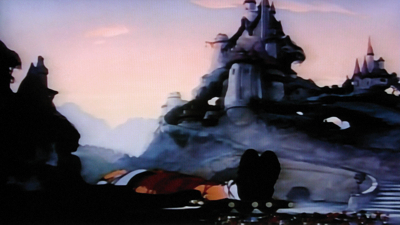
Inside, Dr Reich is back again to tell us all about Gulliver’s Travels in some liner notes on the inside cover, but if they’re supposed to be readable through the Blu-ray’s blue plastic casing, someone didn’t think to make the illustrated scroll white enough…it’s actually colored blue too, so that we essentially have a blue on blue coloring that we have to try and read some very tiny, hard to make out black text on. Slipping the sleeve out obviously helps, but who thought to color the actual insert blue!? Reich’s words here are actually respectable enough, though he does confirm this is essentially a reworking of the 60th Anniversary edition, made from a “long lost 35 print”, which says very little: I have a few 35mm trailers which are in terribly beaten up condition having been run at my local theater. But, you know, they’re 35mm and all that, so they must be good, right? The cover’s rather lush coloring may feel like it can’t all be as bad as I am making out but, seriously, it is.
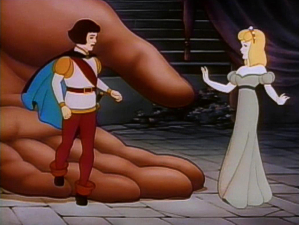
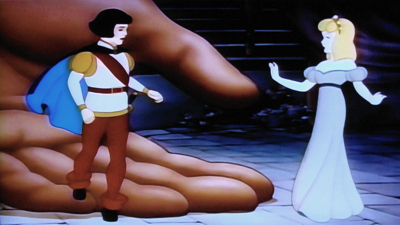
Ink And Paint:
The visual aspects have been clearly marked out above, meaning that we’re still waiting for the film to be treated with some reverent respect. Compared to the 60th Anniversary DVD edition, the colors don’t seem to be Technicolor authentic, and are indeed oversaturated at moments; some scenes that were darker on that earlier disc are brighter here, while other lighter lit shots are decidedly darker!
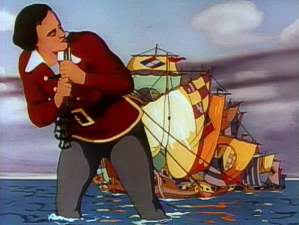
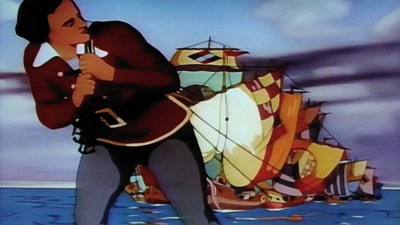
Image Entertainment has been the distributor to come closest so far, with a very fine negative transfer on LaserDisc and an early DVD released somewhat confusingly under their Hal Roach Studio collection, and even the 60th Anniversary disc from WinStar looks MUCH better because the standard definition isn’t trying to be anything it’s not.

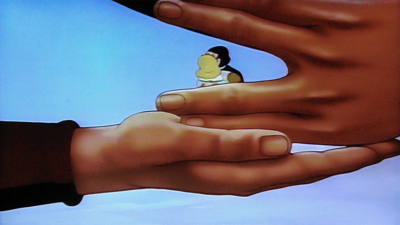
Rumor has is that self-appointed Fleischer custodians Warner Home Video have a stunning archival print transfer up their sleeves, but so far there’s been no word on a release: an early mention of it appearing on one of the Popeye collections sadly not coming to fruition.
But whatever else, you just don’t want to see Gulliver’s Travels the way it has been pulled out of shape on this disc.
Scratch Tracks:
Just as the 60th Anniversary disc offered a choice of restored mono, a Dolby Surround track or a new 5.1 mix with horrifically added in new sound effects, so does this new Blu-ray edition. The 5.1 “newly-enhanced” mix sounds the same as before, to me, as does the “enhanced stereo” track, basically the same mix but squished into two channels. The option to go for, of course, is the restored original soundtrack, and I will say that on both discs this sounds pretty good.


Final Cut:
If you’re a philistine who believes 1930s animation – or film in general for that matter – should be butchered up, made to fit our modern screens and have obtrusive and unbalanced sound effects plastered all over it to cover over the cracks and poor quality, then is this ever the release for you! But for the rest of us, who wish to preserve the filmmaking artists’ original intentions, this is a distasteful and repulsive travesty. The recent Disney restorations may wipe away the essence of film, but they also remove the limitations of the technology of the time, which is what Walt and his boys were always striving to beat. With this release, it’s like finding a priceless china plate, whose colors have faded, and taking colored marker pens to it in an attempt to make it good as new. Where Disney presents a state of the art representation of the original, this is like a copy of a copy of a copy of the original.
That wouldn’t be so bad in itself, if it was the best that could be done, but that the producers of this disc found to be acceptable even to think about reframing a historic work of animation art shows the contempt for this title. If Warners were waiting to see if this edition might have superseded their own efforts, they needn’t worry: there are plenty of Gulliver’s Travels fans out here waiting for the promise of a version that builds on Image’s previous release. So come on, WB, and while you’re at it, throw in Mr Bug Goes To Town in a two-disc double feature! Now that would be a hap-hap-happy day, as opposed to the dark and sinking feeling one gets with this misguided and abhorrent edition. It nearly picked up an overall score of just 1/10 for its half-decent packaging and the archived Fleischer documentary – but with some apparent online blocking tactics being used to try and prevent the publication of images that make the false advertising clear, it loses even that point. Certainly NOT recommended.
 | ||
 |








